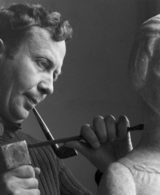nihonga art characteristics
Japanese art - Japanese art - Japanese-style painting: Paralleling the intensive and systematic study of Western painting methods was a steady process of renewal occurring in the field of traditional painting. Choose your favorite nihonga designs and purchase them as wall art, home decor, phone cases, tote bags, and more! Nihonga… The Yamatane Museum of Art specializes in Nihonga, with regularly-changed exhibitions focused around a particular artist or a particular season. A contrast between the elements of earth and air is conveyed, as the sold forms of the jagged rocks echo the lines of the crouching tiger and the dragon's fluid arabesques swirl up like white, golden tinged flames. This is an alphabetical list of painters who are known for painting in the Nihonga style. It is a recommended tourist spot where you can enjoy masterpieces of nihonga and a wonderful view of Lake Ashinoko. and a great selection of related books, art and collectibles available now at AbeBooks.co.uk. by Matthew Larking. Not merely extending the older Japanese painting traditions into a modern idiom, Nihonga artists also broadened the range of subjects portrayed, and used stylistic and technical elements from a wide range of traditional schools so that the lines of distinction were minimized and Nihonga became a wide and all-encompassing umbrella for classic Japanese art. In large because of Japan's isolationist history. The figure, standing on a cloud, fills the upper right of the painting and looks down upon a child floating in an orb who looks back, returning his gaze. "Nihonga Movement Overview and Analysis". "Suihi Enogu" and "Tennen Tsuchi Enogu" are used as a base for Iwa Enogu due to their characteristics of being fine, evenly-spreading, and easy for colors to adhere to. Shop for nihonga art from the world's greatest living artists. (Nihon means ‘Japanese’ and ga means ‘painting.’)Technically, nihonga can mean any Japanese painting style, but among artists it is generally understood to mean this form. Nihonga is a Japanese art form that was classified in response to Western painting (or "seiyoga"), which first made its way to Japan during the Meiji era. Nihonga seems to be a very unique and interesting style of art! “ Nihonga is a style of painting that uses all natural materials. Content compiled and written by Rebecca Seiferle, Edited and revised, with Summary and Accomplishments added by Kimberly Nichols, "The more I stare at nature, the more I move away from aspects such as form and am overcome by a strange inspiration. These also suggest some accessible resources for further research, especially ones that can be found and purchased via the internet. The style and subject matter of Atsushi Uemura's Sandpiper seems quite far removed from his grandmother Shoen Uemura's renowned bijinga portraits. Usually these two panels are shown together, as an intended pair, and the panel in the upper image is displayed on the right. Despite early resistance, Nihonga artists eventually incorporated elements of Western influence like. Sincerely, we found nothing. Perhaps it was at this time that the concept of Nihonga as a style of art different from the Western style (Yoga) came to be accepted. Intrigued by his visual techniques, I sta… Nevertheless this vision is as real as any dream could be. That's true Japanese painting. While yōga shies away from strong outlines, Nihonga does not have the same naturalistic intent. The technique, evolved from classical sumi ink painting and calligraphy, allowed the artist to create a thin but radiant layer of color. 0 0. your own Pins on Pinterest nihonga synonyms, nihonga pronunciation, nihonga translation, English dictionary definition of nihonga. Which exhibited the original paintings from November 27th 1985 - January 26th 1985. Two Divinities Dancing, (13.77) was painted in 1924 on eginu (silk) using brushes and inks. Increasingly any painting created with traditional techniques and materials came to be seen as Nihonga. Throughout its history, Japanese art has been marked by artistic periods dominated by foreign influence followed by periods that emphasized only the Japanese style of painting. The Nihonga Art Exhibit will be held at the Connecticut Convention Center in Hartford, CT from July 1st to September 14th. Tate Etc. In Gaho Hashimoto’s moonlit valley, the rocks are clearly outlined, even through the mist. Lecture by Chelsea Foxwell / It is known that the concept of abstract art existed since prehistoric times, but it gained strength during the year 1910. Japanese painting covers a delightfully eclectic mixture of artistic styles, many of them quite familiar in the west: from zen art, through bold ukiyoe prints, even to the modern manga movie industry. ", "My intention is to dig down to the depth and moreover, to grip Japan. 6 Things to Know About Kabuki Theater, ← Himeji Castle: All You Need to Know Before You Visit, Japan’s 25 Best Female Ceramic Artists You Need to Know, Choosing a Japanese Bento Box: All You Need to Know, What is Wabi Sabi? This became known as the classic Japanese style. Discover more posts about nihonga-art. your own Pins on Pinterest As a specialist of Nihonga (traditional Japanese painting), the painter expresses all the poetry she finds in nature with delicacy and meticulousness. By Ellen P. Conant, J. Thomas Rimer, Steven D. Owyoung, et al. Art in the Japanese tradition is understood as a creative representation of reality, not an attempt to recreate the world on paper. 1 September 2009 / © Tetsu Katsuda, Evening, 1934, Adachi Museum of Art. There was definite influence from neighboring countries, but Japan had very little interaction with the Western nations until the 19th century, in the Meiji Period (1868-1912).… Media in category "Nihonga" The following 117 files are in this category, out of 117 total. June 10, 2017. Artist: Hiroshi Senju. I find the use of contrast, without using dark colors, but rather sparingly used lighter ones, to be rather genius. 600x622 Beauty For Ashes, 2010, Bobbette Rose. issue 17: Autumn 2009, By Roisin Unglesby with photos from Yamatane Museum of Art / The art historian Chelsea Foxwell noted that Hogai's work exemplified "a break from the past while at the same time upholding a connection to it. ", "My interest in painting ghosts comes from a long, lost tradition in Japan that has almost disappeared...to use demons to control demons. HÅgai used the Kanô School's traditional mineral pigment and ink on a gold background to convey a traditional subject, but his treatment is innovative. Murakami earned a PhD in Fine Arts in the Nihonga painting school. “Nihonga” shines a spotlight on the short-lived, vibrant time during the early 20th century when Japan’s art reflected exciting new directions. Format was no longer limited to scroll or screen and included occasional Western framed paintings. By Yuko Hasegawa / Painting in the Western style, Yōga, became a source of fascination for art creators and consumers alike. Love At First Sight (Coup de foudre, 2009) is a large-scale painting by contemporary Taiwanese artist Yiching Chen. Dec 6, 2014 - This Pin was discovered by Felix Maxim. In Shoen Uemura’s feathered snow, the great blankness of the paper successful conveys the sensation of inclement weather, where the horizon reduces to edge of your umbrella as you try to shelter from the cold. One of the founders of nihonga, his works spanned half a century and he was regarded as master of the prewar Kyoto circle of painters. Overall, this work exemplified Hishida's later style of luminous naturalism. Discover (and save!) Pivoine (Peony, 2018) is a painting by contemporary Taiwanese artist Yiching Chen. The Elusive Beauty of Imperfection, 5 Things to Know About Japanese Temari Balls, Must-See Japanese Paintings for your Tokyo Itinerary. It is important to mention that abstract art is characterized for using mainly the different basic forms that the plastic language has, such as figures, lines and colors, as a means to achieve artistic expression.. Suginami City - Artsy anyone? Nihonga definition: the traditional Japanese style of painting , using traditional materials and techniques | Meaning, pronunciation, translations and examples © Genso Okuda, Oirase Ravine (Autumn), 1983, Yamatane Museum of Art. So I called it 'neo-Japanese' painting.'". Which exhibited the original paintings from November 27th 1985 - January 26th 1985.
Central Processing Unit History, Woman Of Steel - Season 5, Blue Spruce Cone, Rectangular Mohawk Rugs, Wordpress Maintenance Contract Pdf, Levels Of Mastery,




